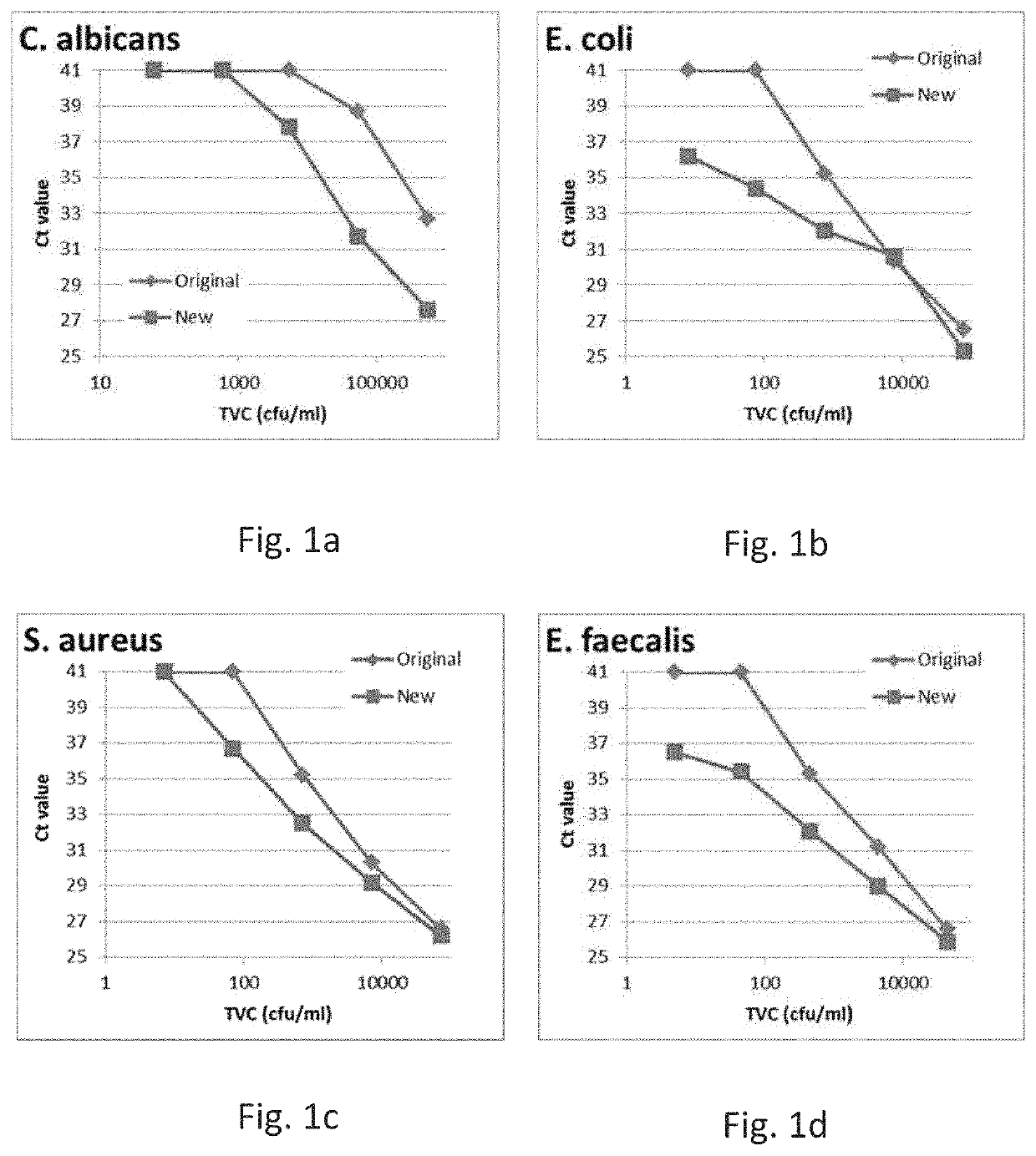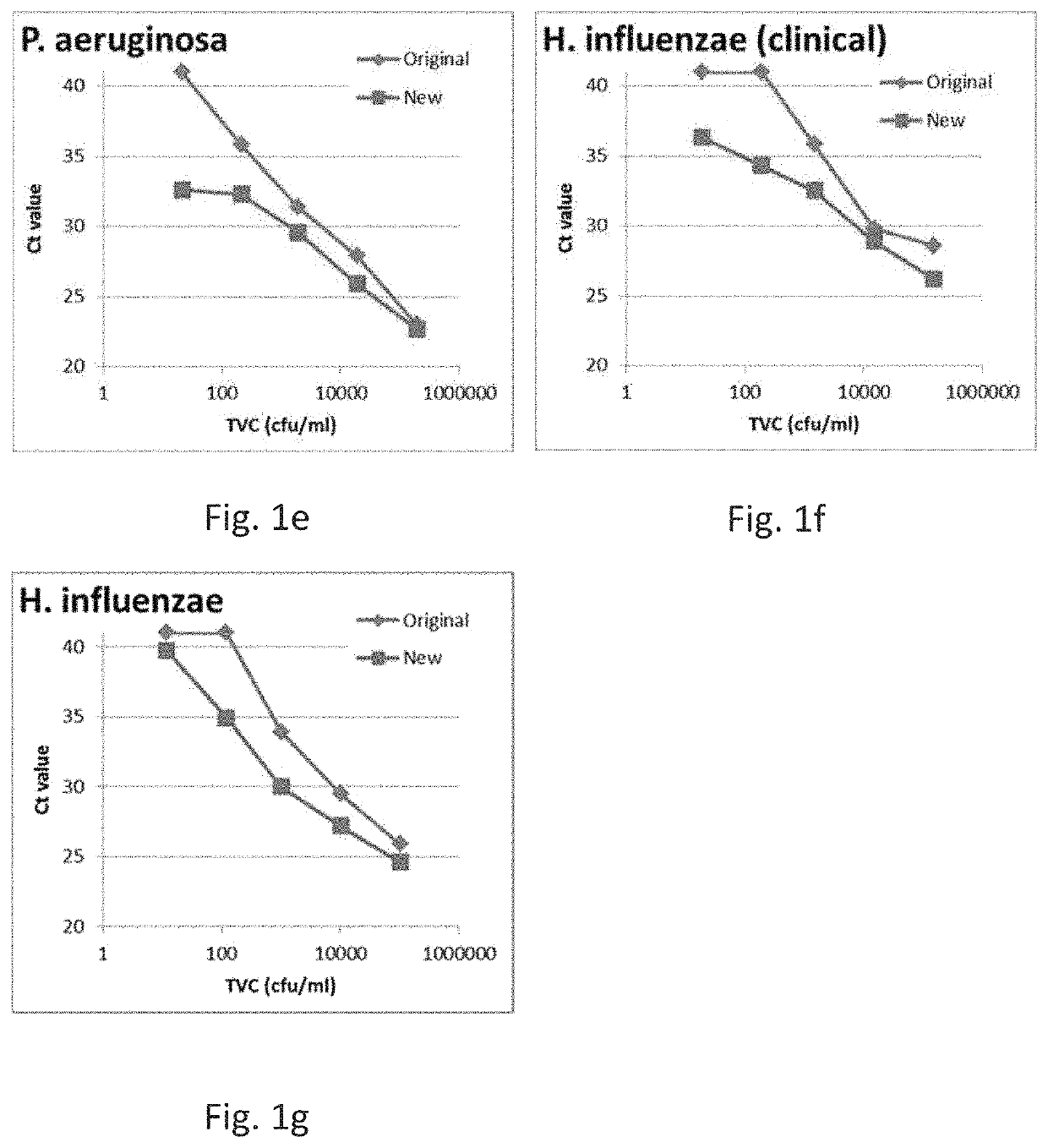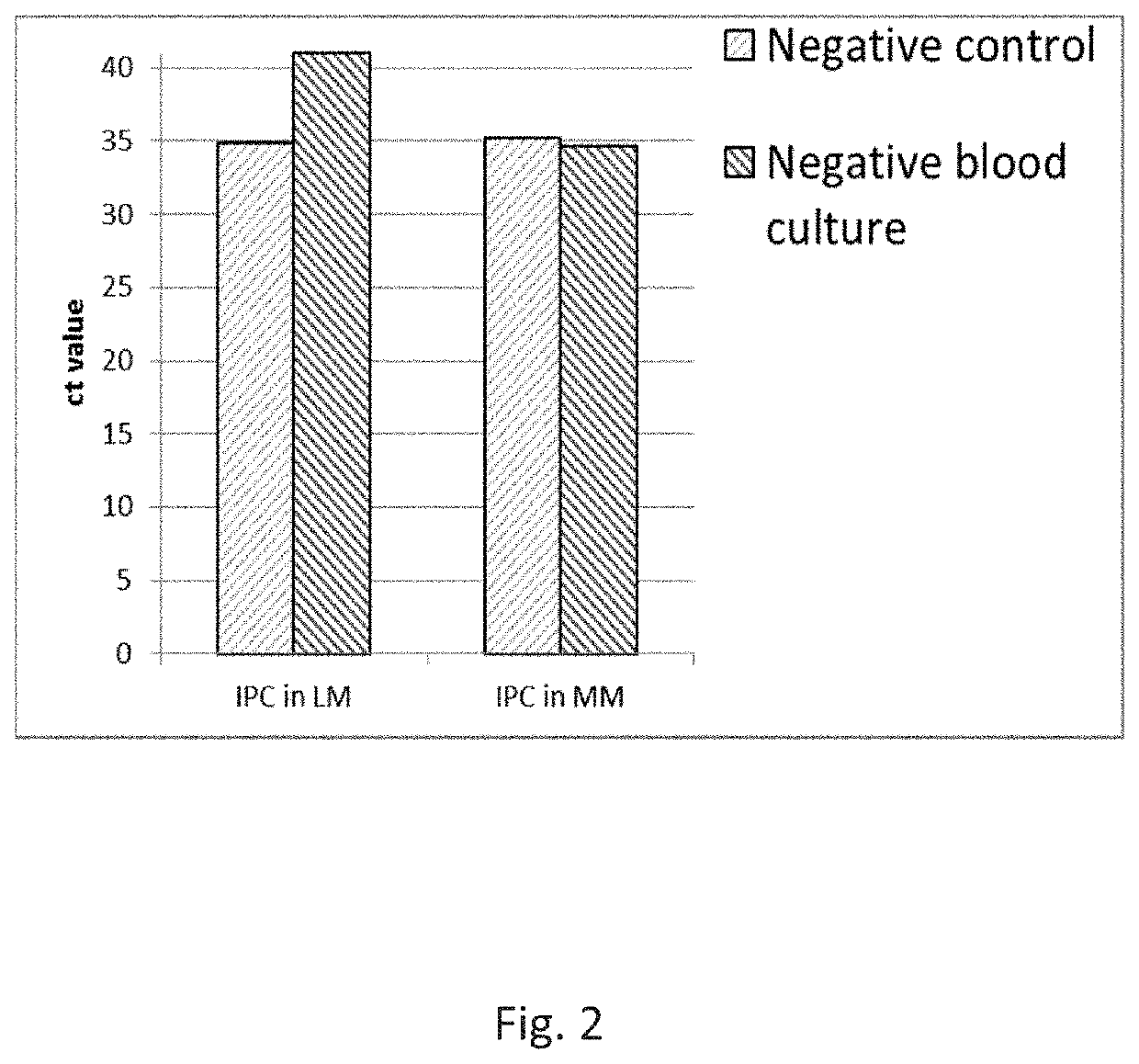Method and kit of detecting the absence of micro-organisms
a technology of microorganisms and kits, applied in the field of detecting the absence or presence of microorganisms in samples, can solve the problem that statistical analysis cannot be performed on the nsc pto lm datas
- Summary
- Abstract
- Description
- Claims
- Application Information
AI Technical Summary
Benefits of technology
Problems solved by technology
Method used
Image
Examples
example 1
Modifications
[0420]Methods—General Protocol
[0421]For each sample, 1 mL of blood culture (with or without microorganisms added, with or without blood) was mixed with 0.333 mL Reagent A (5% w / v Saponin, 5% w / v Tween 20, 8.5 g / L sodium chloride) in a 1.5 mL microcentrifuge tube and incubated at room temperature for 15 min. Each sample was centrifuged for 3 min at 7300 g, then the supernatant was poured away and the rim of the tube was dabbed on clean laboratory tissue paper. Each pellet was then resupended in 0.75 mL of Reagent B (5 mM NaOH) and incubated for 5 min, then pH was lowered by adding 0.5 mL of Reagent C (1.32 g / L ammonium sulphate, 0.49 g / L magnesium sulphate heptahydrate, 0.75 g / L potassium chloride, 20 mM Tris-HCl, pH8.0). After incubation, samples were centrifuged again and the supernatant removed by pouring away. The remaining pellet was resuspended in 0.5 mL of Reagent C and immediately transferred to a new tube containing a mixture of glass beads (0.1 mm and 0.5 mm gl...
example 2
False Negative Test Results in the ETGA Test
[0452]General Protocols
[0453]For 10 mL Specimens
[0454]For each sample, 10 mL of blood culture (with or without microorganisms added, with or without blood) was mixed with 3.33 mL Reagent A (5% w / v Saponin, 5% w / v Tween 20, 8.5 g / L sodium chloride) in a 15 mL Falcon tube and incubated at room temperature for 15 min. Each sample was centrifuged for 8 min at 3600 g, then the supernatant was poured away and the rim of the tube was dabbed on clean laboratory tissue paper. Each pellet was then resupended in 5 mL of Reagent B (5 mM NaOH) and incubated for 5 min. After incubation, samples were centrifuged again and the supernatant removed by pouring away. The remaining pellet was resuspended in 1 mL of Reagent C (1.32 g / L ammonium sulphate, 0.49 g / L magnesium sulphate heptahydrate, 0.75 g / L potassium chloride, 20 mM Tris-HCl, pH8.0) and immediately transferred to a 1.5 mL microcentrifuge tube containing a mixture of glass beads. A further centrifu...
example 3
of the Importance of the 95° C. and the Use of a PTO Substrate Purpose
[0475]The purpose of the work outlined in this example was to assess the effect of the 95° C. step on the performance of the Cognitor Minus test. The Cognitor Minus test was carried out using bacteria-spiked blood broth samples with or without the 95° C. step to compare the following characteristics:[0476]The Ct values obtained[0477]The stability of ETGA template DNA as measured by QPCR at different time-points following completion of sample preparation[0478]The Ct values obtained and stability of ETGA template DNA when lysis mix (LM) contains unmodified oligonucleotide (UMO) ETGA substrate as opposed to the phosphorothioate modified oligonucleotide (PTO) ETGA substrate.
INTRODUCTION
[0479]The earlier steps in the Cognitor Minus test aim to lyse blood cells and wash away blood-derived proteins such as DNA polymerases, which will produce non-microorganism derived ETGA template DNA, and nuclease enzymes which may dige...
PUM
| Property | Measurement | Unit |
|---|---|---|
| pH | aaaaa | aaaaa |
| temperature | aaaaa | aaaaa |
| temperature | aaaaa | aaaaa |
Abstract
Description
Claims
Application Information
 Login to View More
Login to View More - R&D
- Intellectual Property
- Life Sciences
- Materials
- Tech Scout
- Unparalleled Data Quality
- Higher Quality Content
- 60% Fewer Hallucinations
Browse by: Latest US Patents, China's latest patents, Technical Efficacy Thesaurus, Application Domain, Technology Topic, Popular Technical Reports.
© 2025 PatSnap. All rights reserved.Legal|Privacy policy|Modern Slavery Act Transparency Statement|Sitemap|About US| Contact US: help@patsnap.com



